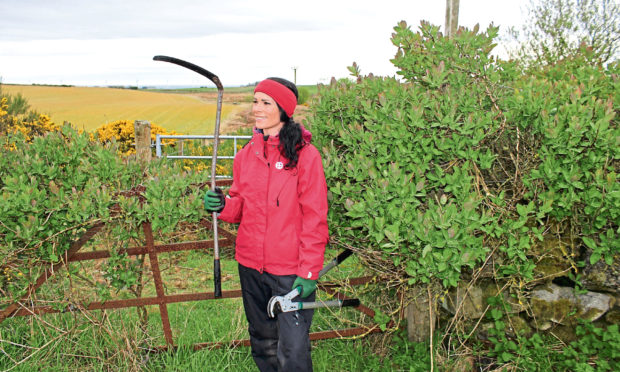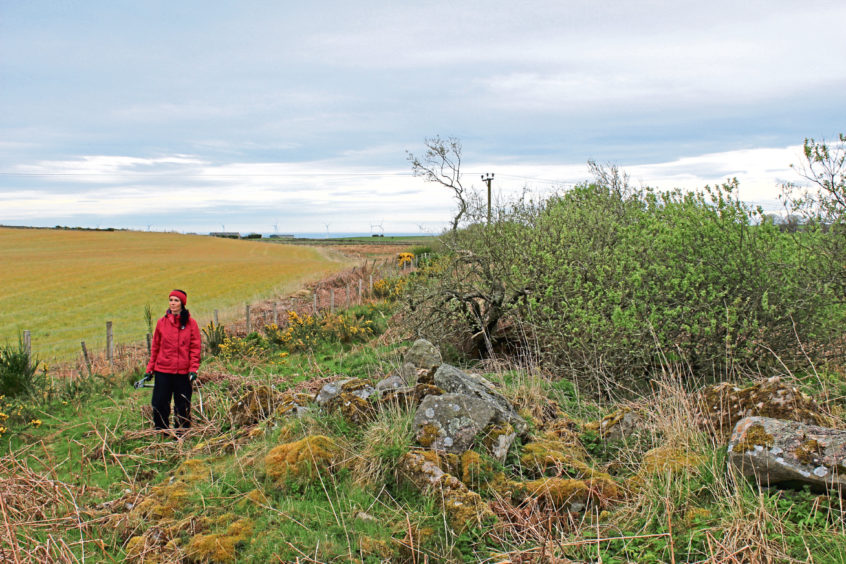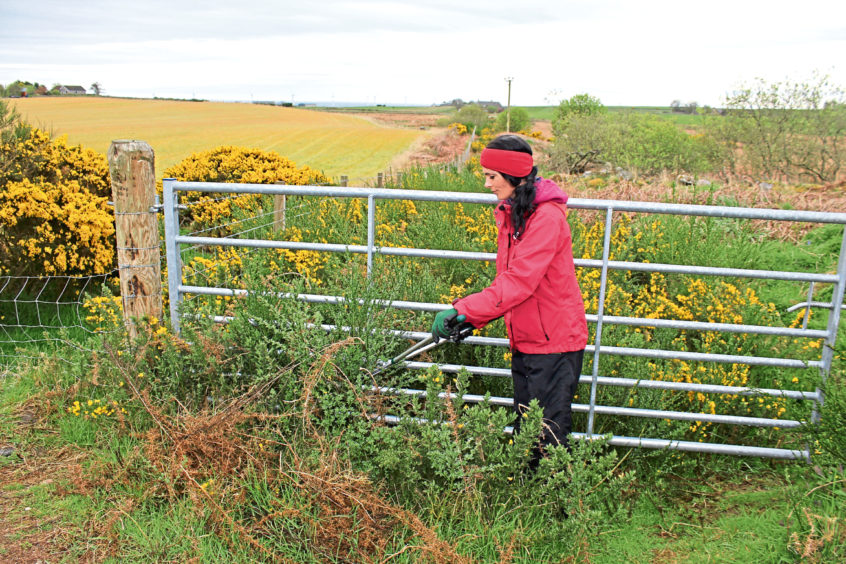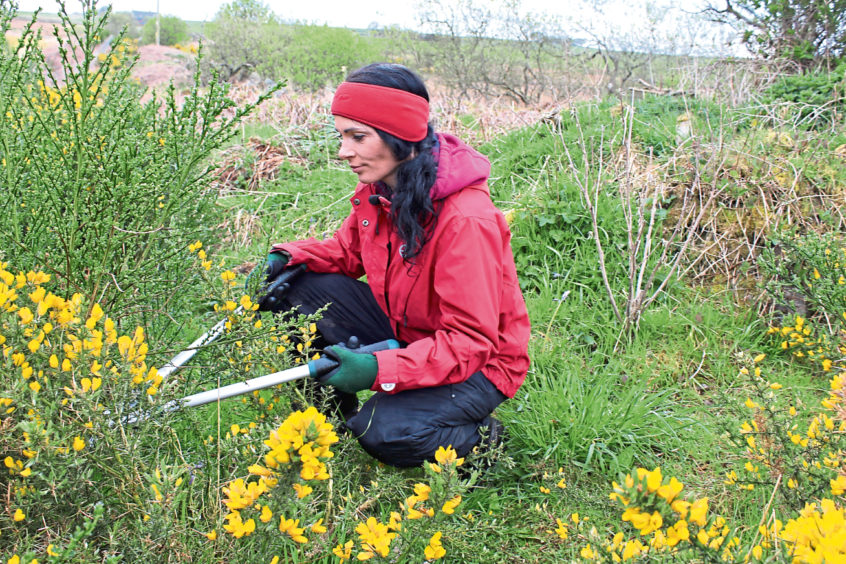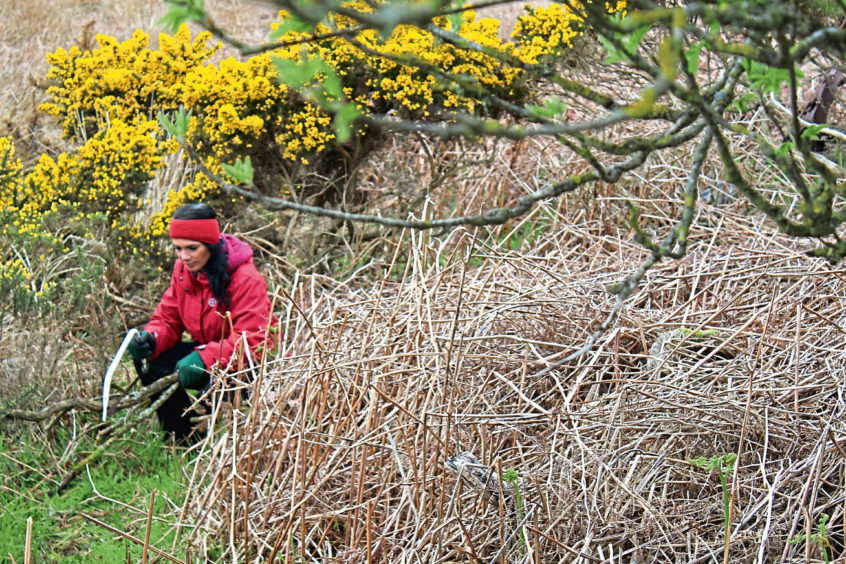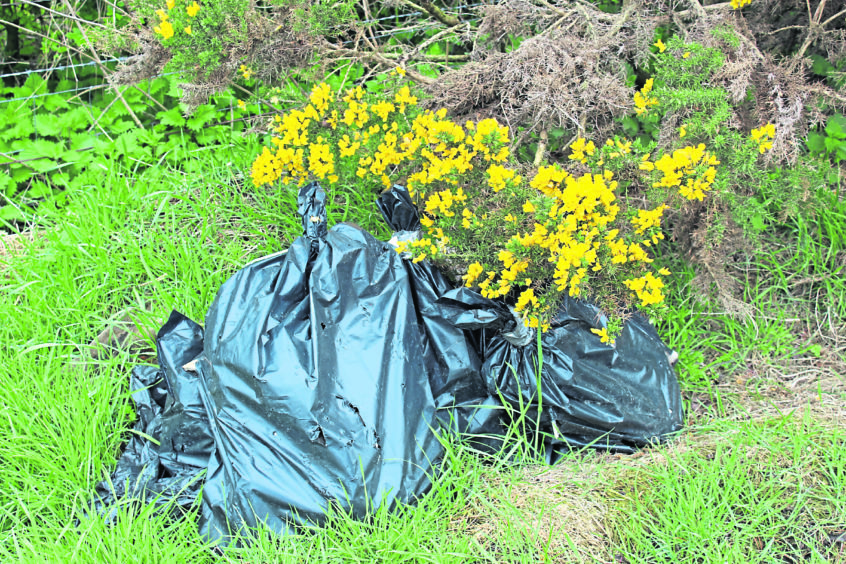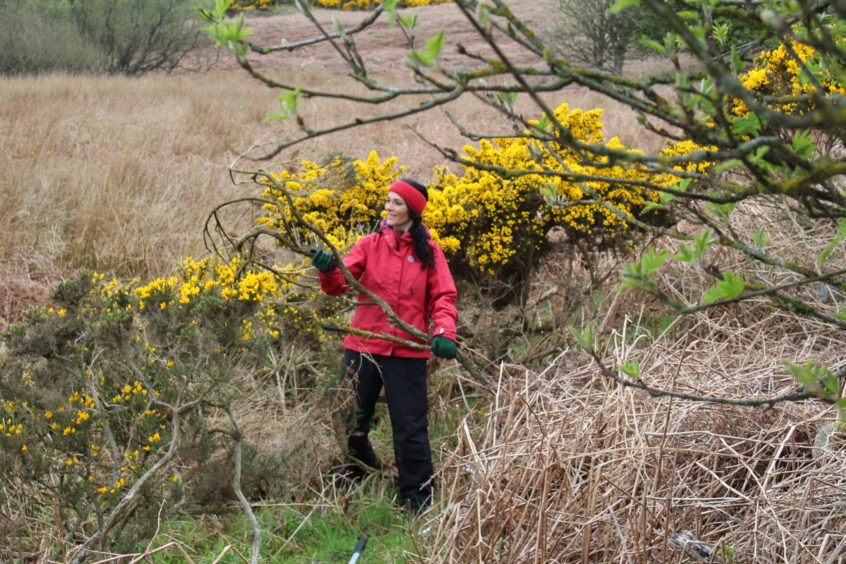Lockdown has inspired many folk to get out and explore areas closer to home on foot. Gayle rediscovers – and clears – an old right of way…
Weekends before lockdown were a very different kettle of fish – for me, at least.
Mine would often be planned around going for walks somewhere reasonably far away, whether the Angus Glens, the Cairngorms or further afield.
Now, with driving reduced to an absolute minimum (I haven’t filled up with fuel since March), I’ve found myself exploring areas closer to home on foot.
I’m lucky to live in the countryside, so there’s plenty of scope to roam for miles without bumping into people.
On one of my recent rambles, I noticed a rusty metal gate entwined with honeysuckle and the cogs in my brain started to tick.
Could I squeeze through this gate? And if I managed to do so, what would be on the other side?
After a few preliminary shoves and heaves, I realised the gate wasn’t going to budge; it clearly hadn’t budged for years.
However, I managed to scale a crumbling dry stane dyke that ran alongside it without too much trouble.
Negotiating huge clumps of prickly gorse, I found myself in uncharted territory.
I spent a good hour exploring a strip of woodland, discovering a dilapidated shooting hut and enjoying lovely views across fields and moorland.
This “new” walk triggered off a childhood memory of another lovely route just a few fields away.
I hadn’t been along this old right of way for decades but I was among a group of people who helped clear it – and made it accessible – back in the 90s.
The route, which skirts a moss, was originally used by kids walking to school and families heading to church.
When the school closed and there was an easier way to reach the church by car, the moss soon became a dumping ground for old vehicles, fridges and cookers in the 50s, 60s and 70s.
Evidence of this is in abundance, with rusting electrical goods and cars and rotting wooden carts rearing up out of the ground as if in protest.
When we turned up to clear the track in the 90s, as well as noting all the stuff that had been dumped, we found it was completely overgrown and pretty much impassable.
The pink spikes of rosebay willowherb towered over us, the flowers puffing their fluffy seeds into our faces when we brushed against them, and of course, gorse bushes with their nasty spikes, were there in all their glory.
Over the course of a few weekends, around 10 of us got to work with shears, clippers, scythes and saws and completely cleared it.
The track once again became a great place to walk, although with rabbit holes galore, you had to keep your wits about you.
What state would this old right of way be in now, I wondered? There was only one way to find out.
Armed with an assortment of tools, I headed to the entrance. Gazing down the winding route, it seemed a daunting task.
It was too early in the year to be covered with rosebay willowherb, but thick swathes of gorse and broom dominated, plus a few fallen trees were blocking the way.
Venturing on to the track, I wished I’d worn thicker trousers as the gorse prickled painfully through the pathetically thin pair I was sporting.
Determined not to be defeated, I whipped out my clippers and shears and began hacking away at the dense growth.
The handsaw proved invaluable in cutting down branches obstructing the track but, as there were very few nettles, my scythe remained redundant.
During my clearing session, I was horrified to discover bags of rubbish dumped at an entrance to the track.
I wasn’t going to open them up to investigate, but I suspect they may have contained some old building materials, as they were very heavy and something which looked a wee bit like asbestos was poking out of one black bag. Not good.
I returned to collect this in the car and dumped it in a proper bag. Not my job, of course, but I didn’t want to leave it sitting there, polluting the environment.
Having rediscovered this old right of way for the second time in my life, I intend using it often.
Alas, tracks like these need to be kept on top of.
If you forget about them and let stuff grow rampant, weeds, shrubs and bushes tend to rapidly consume them.
That’s why, in the knowledge that nettles, ferns, rosebay willowherb and who knows what else will sprout up soon, I’ll be returning to clear it on a regular basis.
I’m not alone in my mission to preserve – and keep on using – old routes.
ScotWays, UK’s oldest outdoor access group, works to protect and develop access to the Scottish countryside and promotes and preserves heritage paths so that future generations can continue to enjoy them.
“To be a right of way, a route must have been used for at least 20 years, must connect two public places, and must follow a more or less defined route,” says Richard Barron, chief operating officer of ScotWays.
“We need people to use these routes or they become overgrown and fall into disrepair.”
Richard says while local authorities “have a duty” to keep routes free of obstruction, the truth is, when money is tight and “priorities have changed”, they might weigh up whether to lift your bins or remove a fallen tree.
“Our message is – use it or risk losing it,” he adds.
Info
Founded in 1845, ScotWays (The Scottish Rights of Way and Access Society) is an independent charity which upholds and promotes public access rights in Scotland.
You can spot the charity’s recognisable green and white signs on routes across Scotland. scotways.com
